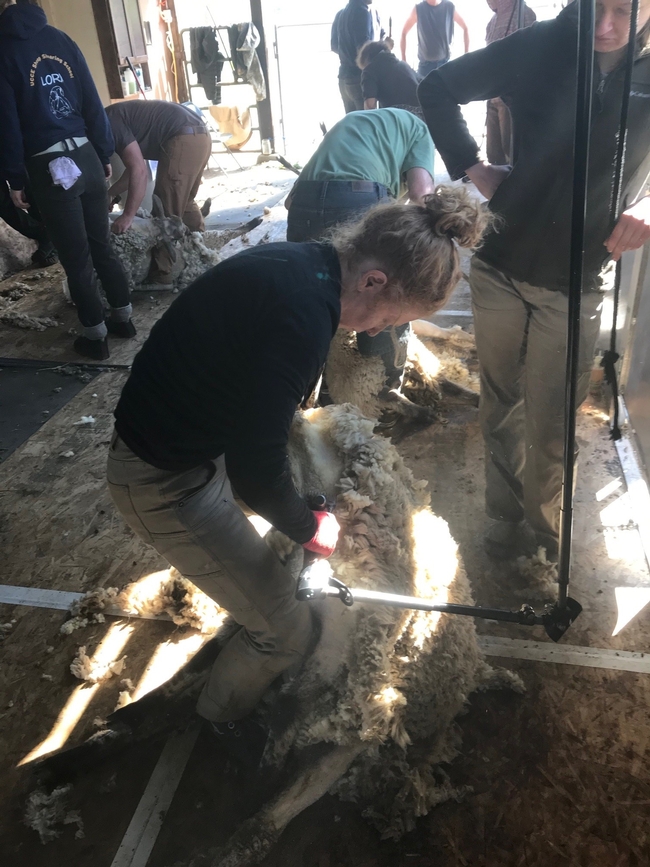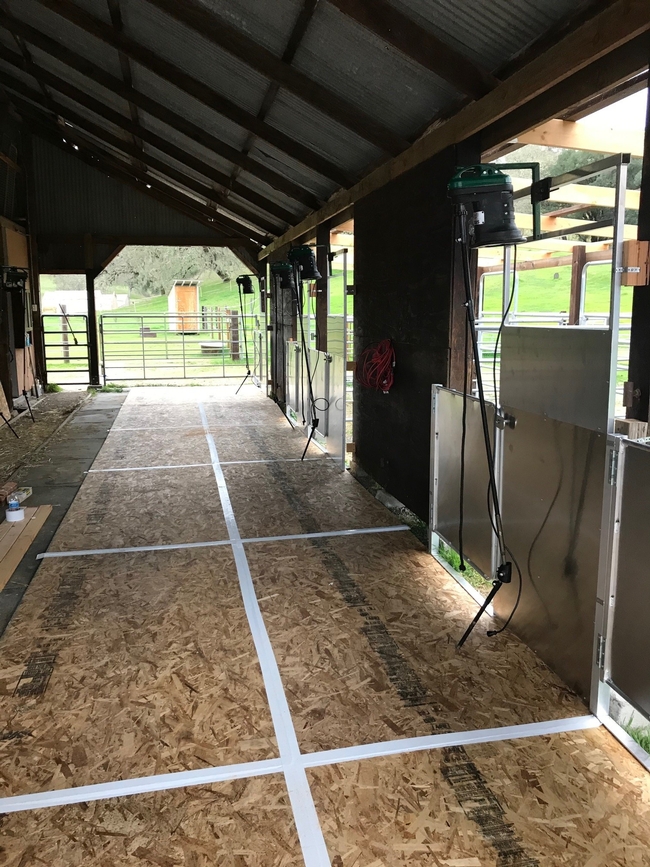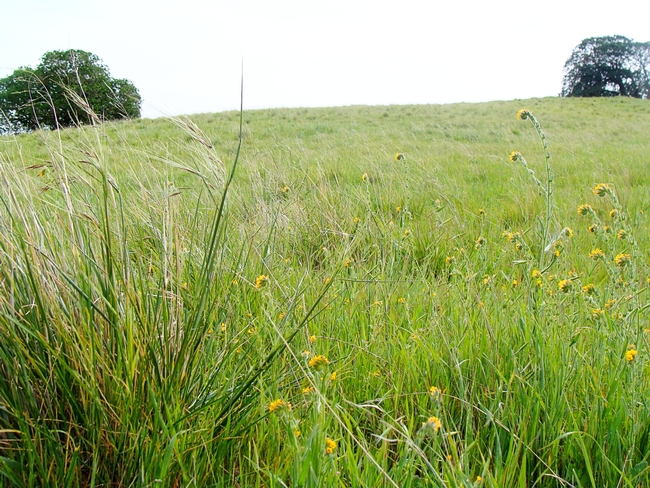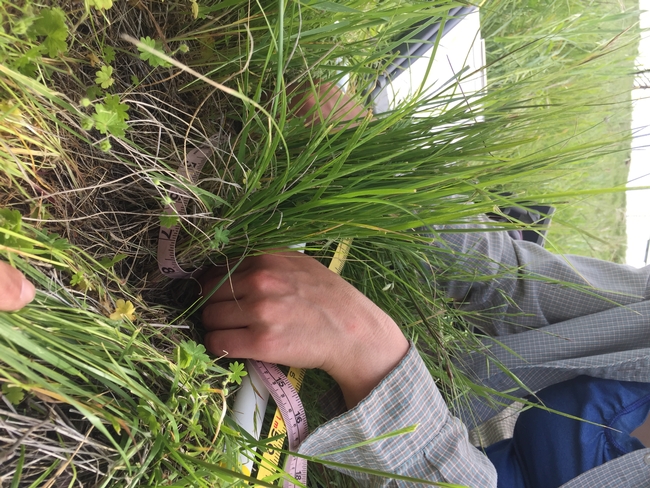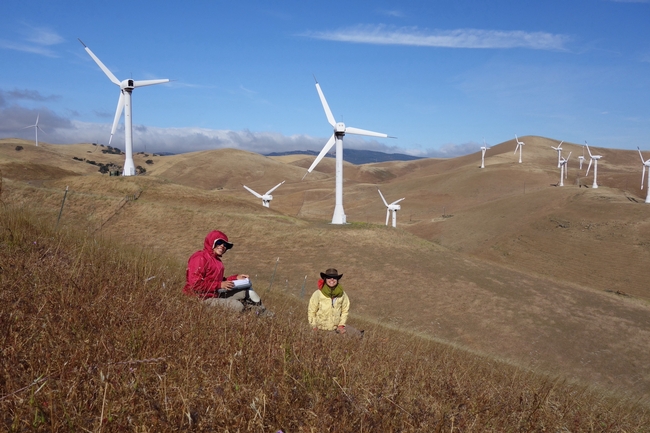
Posts Tagged: Sheep
Sheep Moths Draw Attention at Bohart Museum of Entomology Open House
Unless you're an entomologist, moth enthusiast, or an avid follower of National Moth Week, you may have never seen or heard about sheep moths. Those who attended the Bohart Museum of Entomology open house on social wasps, held Jan. 20, learned all about them from entomologist...
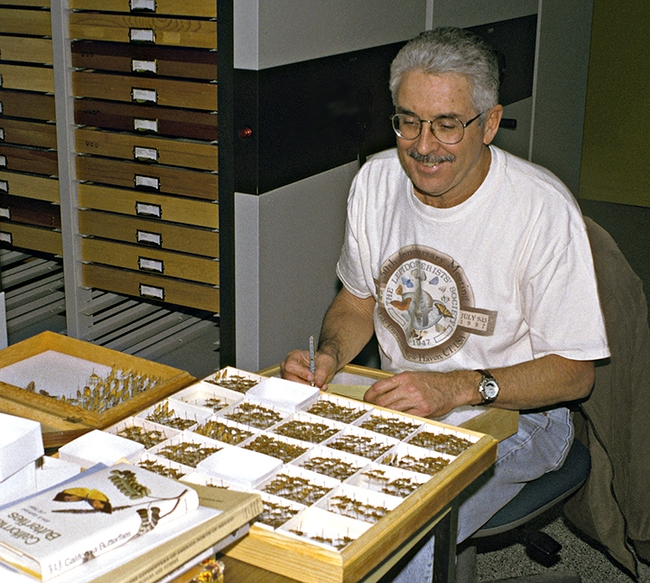
The late Mike Smith, a 20-year U.S. Air Force veteran who retired in Folsom, looks over his collection. The sheep moths he collected are now in the Bohart Museum. He passed in 2003. (Photo courtesy of Jeff Smith, curator of the Bohart Museum's lepidoptera collection)
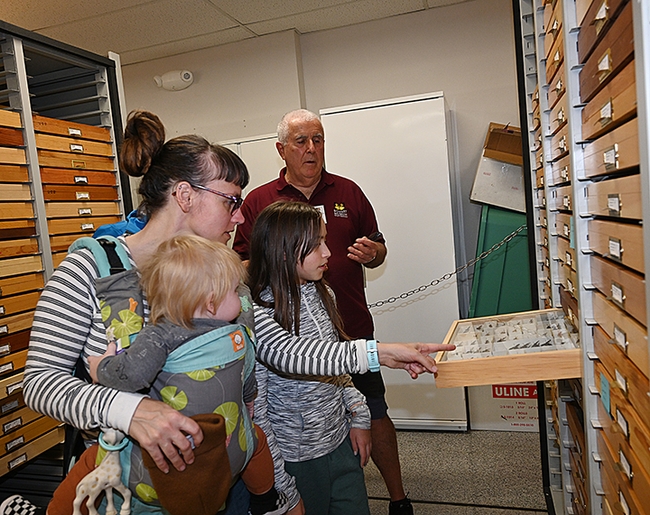
Entomologist Jeff Smith, curator of the lepidoptera collection at the Bohart Museum of Entomology, chats with Sacramento residents Skylan Potter, 11, and her mother, Camille Potter, holding son, Kehlan. (Photo by Kathy Keatley Garvey)
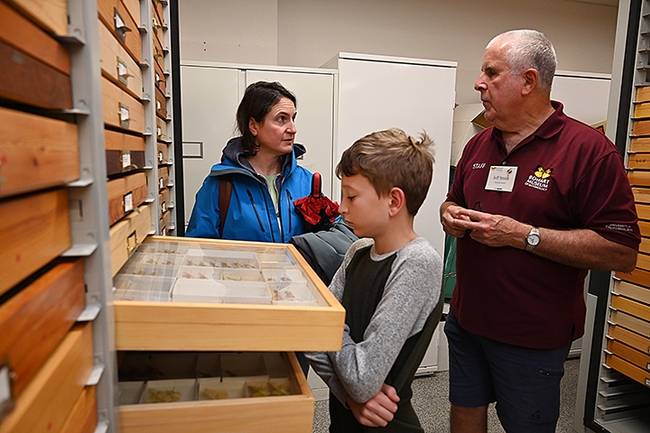
Entomologist Jeff Smith, curator of the lepidoptera collection at the Bohart Museum of Entomology, explains moth specimens to Katie Dietrich and her son, Andrew, of Davis. (Photo by Kathy Keatley Garvey)
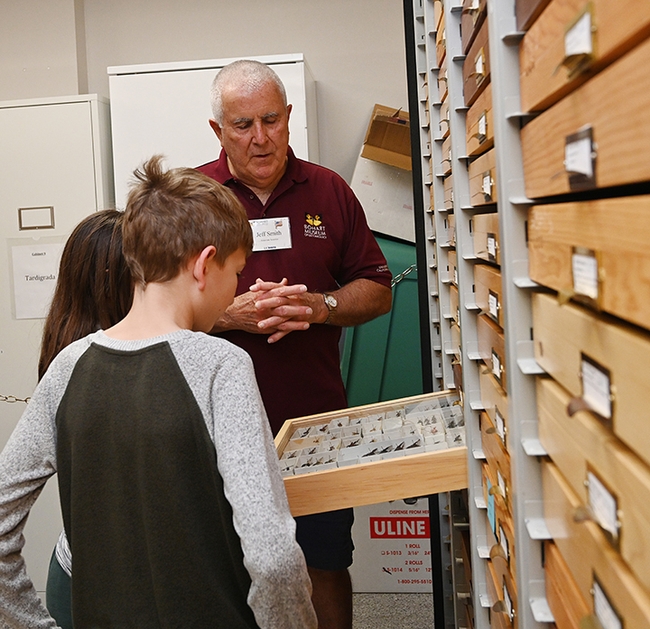
Entomologist Jeff Smith, curator of the Bohart Museum's lepidoptera collection, shows moths to Andrew Dietrich of Davis. (Photo by Kathy Keatley Garvey)
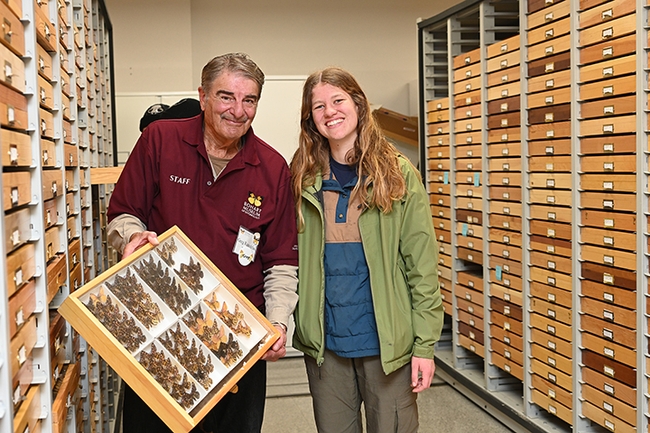
Bohart Museum associate Greg Kareofelas, and scientist Sophia Acker of the Del Castillo lab, UC Davis Department of Plant Pathology, display a drawer of sheep moths, Hemileuca eglanterina. (Photo by Kathy Keatley Garvey)
Opportunity to Support the US Sheep Shearing Team at the Golden Shears World Championships
Support the American Shearing Team
Producers looking to support the American team headed to the Golden Shears World Championships next month in Scotland can do so by purchasing a Team USA T-shirt or hoodie offered through American Hero Clothing.
The T-shirt sells for $30 and the hoodie for $60. A portion of the proceeds will support travel expenses for the American team.
Click Here to buy the T-shirt.
Click Hereto buy the Hoodie.
Source: American Sheep Shearers Council
UCCE Week-Long Sheep Shearing School is Back in 2023!!!
After two years of Covid restrictions, I'm happy to say that I'll be doing our very popular week-long shearing school. The dates are March 20th through 24th, 2023. It will be located once again at the Twinning Barn near Ukiah.
We will limit the class size to 28 students and we will have 5 instructors including me. The cost is $850 and is not refundable for partial participation. California residents will receive priority and local Mendocino and Lake County students can apply for a scholarship to reduce the cost of enrollment. Scholarships are awarded only after a student completes the course.
As we've done in the past, we ask folks to fill out the interest survey here https://surveys.ucanr.edu/survey.cfm?surveynumber=39994. Make sure you complete the survey immediately if you haven't done so in the past.
We will provide instructions on how and when to register on-line with a credit card
(Visa or Mastercard) only to those on the interest survey list. It is a separate survey.
With the exceptions already noted here, when registration opens on-line it will be a first come first in for the 28 slots. If you are on our interest list from years past and have never gotten in, please write an email to me, John Harper, jmharper@ucanr.edu and describe why you want to take the course. In past years the on-line class has filled in under 2 minutes.
We will take a few extras on the registration as alternates to be contacted if successful registrants' have to cancel before the first week prior to the school
.
The no-tech way to preserve California’s state grass
Disappearing native is like an environmental Swiss Army knife
Though it is disappearing, California's official state grass has the ability to live for 100 years or more. New research demonstrates that sheep and cattle can help it achieve that longevity.
Purple needlegrass once dominated the state's grasslands, serving as food for Native Americans and for more than 330 terrestrial creatures. Today, California has lost most of its grasslands, and the needlegrass occupies only one tenth of what remains.
It is drought resistant, promotes the health of native wildflowers by attracting beneficial root fungi, burns more slowly than non-native grasses and speeds the postfire recovery of burned lands. For these and other reasons, many who work toward habitat restoration hope to preserve the needlegrass.
“Where it grows, these tall, slender bunches become focal points, beautiful as well as environmentally beneficial,” said Loralee Larios, a UC Riverside plant ecologist affiliated with UC Agriculture and Natural Resources. “However, identifying successful management strategies for a species that can live for a couple hundred years is challenging.”
To meet that challenge, Larios teamed up with University of Oregon plant ecologist Lauren Hallett and Northern California's East Bay Regional Park District. They tracked the health of nearly 5,000 individual needlegrass clumps over six years, including an El Niño rain year as well as historic drought.
The researchers took measurements of plant health including growth and seed production. They placed small bags over many of the grass clumps to capture the seeds and quantify the number of seeds they produced.
Their findings, now published in the Journal of Applied Ecology, were that purple needlegrass did better in places where sheep were allowed to graze. The positive effects of the grazing were amplified in times of wetter weather.
Previously, the park district spent a decade trying to assess the success of its grassland maintenance techniques. However, the district's method of applying a strategy like grazing, and then measuring the percentage of needlegrass clumps in a given area resulted in data that didn't follow a discernable pattern from year to year.
“By tracking each plant over time, rather than scanning broadly across an area, we gained much more clarity about how the grass responds to the grazing,” Larios explained. “Perhaps counterintuitively, we saw that the needlegrass generally died back when sheep weren't allowed to graze on it.”
When sheep were removed from the study sites, the needlegrass in all but two of the sites became less healthy. The researchers would like to learn whether the two sites that remained healthy have needlegrasses that are genetically distinct.
Grazing is a controversial strategy for grassland restoration. Some conservationists believe sheep eating the target grass, particularly during already stressful drought years, does not enhance their survival. As far back as the 1800s, some researchers hypothesized that the combination of grazing and drought resulted in the loss of perennial grasses.
Though drought was not beneficial for any of the plants in this study, the researchers believe grazing helped needlegrass survive in at least two ways. One, by trampling on leaf litter and other organic debris, sheep created space for new needlegrass to grow.
“Sometimes you get litter that's as deep as a pencil — so much dead, non-native grass piles up. It's hard for a little seed to get enough light through all of that,” Larios said.
Secondly, sheep eat non-native grasses that generate growth-suppressing debris and compete with purple needlegrass for resources.
When the Spanish colonized California, they brought forage grasses like wild oats that they thought would benefit cattle. Those introduced grasses spread, and now dominate the state's grasslands.
“Our grasslands are known as one of the world's biggest biological invasions,” Larios said.
California has as many as 25 million acres of grasslands, equivalent to the combined areas of Massachusetts, Connecticut, and Rhode Island. Though Larios does not believe it is possible to rid the state of all non-native grasses, she said it is possible to maintain or even increase the amount of purple needlegrass.
“It's great for carbon storage, which mitigates climate change, it doesn't serve as wildfire fuel, and cultivates a space for wildflowers that pollinators are then able to use,” Larios said. “We want to keep all those benefits.”
New Organic Livestock Rules Proposed
For producers doing organic livestock:
|
USDA/AMS Proposing New Organic Livestock Regulations
The United States Department of Agriculture's Agricultural Marketing Service proposes to amend the organic livestock and poultry production requirements by adding new provisions for livestock handling and transport for slaughter and avian living conditions; and expanding and clarifying existing requirements covering livestock care and production practices and mammalian living conditions.
AMS will host a virtual listening session on Aug. 19 from noon to approximately 2 p.m. eastern time to hear comments regarding this proposed rule. The deadline to register for oral comment is 11:59 p.m. eastern time on Aug. 15.
Click Here for more information.
Source: USDA/AMS |

